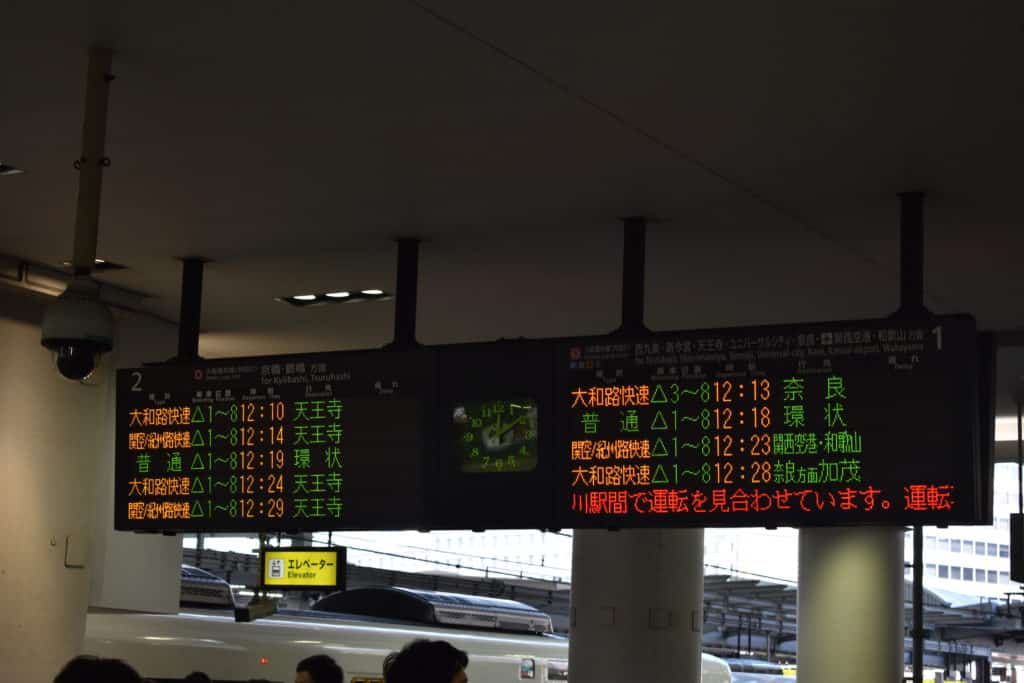

As a foreigner from the other side of the world, I quickly found out that Japanese culture is very different from western culture. That’s why I decided to make this post, telling you about the things you should know before visiting Japan. Even after spending only five days here, I found out some things that you should keep in mind when walking through the streets of this Asian island.
I know, it’s difficult to set aside your own cultural bias and see things the way someone from an entirely different culture does. But isn’t that what makes it worth it?
Anyway. Here are 11 tips and tricks that are guaranteed to make your trip to Japan happen without any awkward moments.
Latest update: 15 May 2019
Even though the possibility of getting fined shouldn’t be your only incentive for not littering, you might want to hold on to your trash a little bit longer. Littering on the street will get you a fine of 30.000 yen (about €230/$270).
Similarly, smoking outside of designated smoking areas is very much frowned upon. If you smoke outside at a place you’re not supposed to, you’ll receive a fine of 1.000 yen (about €7,7/$9). It might not seem like a lot, but you’d still be paying more than you would have paid if you hadn’t smoked at all.
That being said, smoking isn’t prohibited in Japan, but it’s just very restricted. To me, it was funny how nobody smoked on the street, but people were allowed to light up a cigarette inside a restaurant or a bar.
My dad has been travelling to Japan for work since the nineties. He told me that it used to be nearly impossible to visit Japan as a foreigner who doesn’t speak any Japanese.
However, we quickly noticed that Japan is actively trying to attract English-speaking visitors. On a train ride, most major train stations are announced both in Japanese and English, some restaurants have an English menu and often have at least one waiter who knows enough English to take your order.
Even if the restaurant doesn’t have an English menu, you can still get a pretty good image of what you can expect through the pictures. Pointing at a picture and nodding at the waiter is more or less a universal thing, I’d say.
And if the menu doesn’t have any pictures, you can still use Google Translate to tell the waiter to surprise you and bring you anything (like we did on our first night in Osaka).
Outside of the culinary world, you can get away with guessing what everything says surprisingly well. If you’re looking at an information board, it’s easy to spot the prices of what you want to visit. Usually, they’re the only numbers on there. And yes, Japan uses the same numbers as western countries.
Yes, you’ll probably pay more for your flight than you would on a weekend trip to the next state/country over. However, Japan is not as expensive as many guidebooks and articles would have you believe.
If you budget your trip well and plan everything in advance, you’ll get to visit one of the most amazing countries on earth without breaking the bank.
In order to save money in Japan, here are some things you can do:

If your electrical outlets don’t look like this, your plugs won’t fit in Japan.
People from North and Central America should have no problem fitting their plugs into these outlets, but anyone who uses other plugs will need to get a plug adapter.
You should also note that the voltage in Japan (100V) is different from North America (120V) and Europe (230V). That basically means that your appliances might not work optimally when plugged into a Japanese outlet.
In most cases, this is nothing to worry about and your devices won’t be damaged. Just to be safe, make sure the label on your device says something like “INPUT: 100-240V, 50/60 Hz”. This means that it can be used and charged in every country (and it’s pretty common nowadays).
You can’t leave Japan without trying some of their wonderful local cuisine.
During my two weeks in this country, I ate many things that I don’t normally eat in Belgium, and I encourage you to do the same.
Food is one of the main expressions of culture, and why would you be travelling if not to get a taste (pun intended) of other cultures?
You can find some of my recommendations below.
Also, the crazy flavours of candy and chocolate are actually a thing. If you’re not going to try them in Japan, you might as well not come at all.

When we came home, my sister and I made candy that looked like sushi. Yes, we made candy. (Side note: it didn’t taste great but we had the best time making it)
Japanese waiters, or any other service workers, don’t expect to be tipped. They often see it as an insult to their service and might even refuse the tip.
As good service is considered to be the standard in Japan, they don’t see why tipping would be necessary.
No matter how customary it might be in your home country (yes, United States, I’m looking at you), you should probably refrain from tipping service workers. Whereas service workers in the States more or less depend on tips for their salary, Japanese workers are fairly compensated and they don’t need, much less expect a tip.
Anyone used to eating with a knife and fork could have a hard time getting food to their mouth in Japan.
I won’t explain how to use chopsticks in this blog post, but I will refer you to this article which explains it marvellously.
If you’ve never used chopsticks before, you may find it easier to learn using training chopsticks (they’re made for Asian kids, but nobody will care if they see you using them as an adult).
Although the Japanese government seems to be making efforts to attract English-speaking tourists, the common folk is still pretty bad at English.
I’m not saying they won’t understand you. I’m not even saying they won’t be able to have a basic conversation with you. But you really shouldn’t expect a lot more than that basic conversation.
Then again, you’re probably not in Japan to talk English. It’s all just a part of the charm of Japanese culture.

Bonus: you’ll get some laughs out of translations made with Google Translate (or its Japanese equivalent).
Wherever you’re staying in Japan, it’s very unlikely that you’ll need a rental car. Period.
If you plan on spending a lot of time in major cities, you’ll be fine using trains, taxis and your feet.
If you want to hop from one city to the next, I recommend using Japan’s network of high-speed trains, Shinkansen. Most Shinkansen lines are covered by your JR Pass, but I recommend booking tickets in advance. It’s not necessary, but at least you’ll be guaranteed a spot on the train.
The trains work like a charm. They’re almost never late because they’re operated by seven privately-owned companies (who work together in the Japan Railways Group). If they are late, the delay is announced and explained in other trains, which is more than can be said for other countries (not-so-subtle reference to how badly public transport in Belgium is organised: check).
Either way, the chances of you needing a rental car are pretty slim.

Yes, the trains are a pleasure to use and they’re very well organised.
And yet, to an outsider like me, it was still a bit confusing at first.
If you have a JR Pass, as I suggested before, you can pretty much take any JR train in Japan. (That’s why the JR Pass is such a good deal, duh.)
Where Japanese commuters are able to open the turnstile by scanning their card, you won’t be. Luckily, you’ll find a clerk nearby all turnstiles and they’ll let you through after you show them your JR Pass. Sometimes they don’t even want to put in the effort of actually looking at your pass and you can just walk through like that.
It might take you a few days to get used to how public transport in Japan works, but once you get it, it’s easy.
These were my things to know before visiting Japan.
Now, you’re all ready to explore the beautiful country of Japan. Enjoy your time there and be sure to send me pictures if you do visit.
Thanks for reading!
-S
PIN IT!


Design by NXNW.